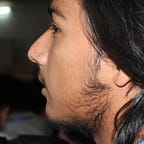High-Performance Computing Facility at Kathmandu University
http://sigdelsanjog.com.np/high-performance-computing-facility-at-kathmandu-university/
Office of Research, Development, and Consultancy, Kathmandu University organized a one day workshop on “Using High-Performance Computing (HPC) facility at Kathmandu University”, today at the University premises. It was a fruitful workshop where we got to access the supercomputer remotely via the Secure Shell(SSH) connection. The training was provided by Dr. Rajendra P. Adhikari, Assistant Professor, Kathmandu University.
Dr. Adhikari gave the introduction about HPC Facility which is established in the Information Technology Park, Panauti, Kavre. This supercomputer was donated by the CERN Research Institute to Kathmandu University. This facility has the following infrastructure:
- 184 computer servers91824 cores, 6.5TB RAM, 6.5TB RAM)
- 16 Storage servers(768 TB raw disk)
- 6 1Gbps switch
- 6 10Gbps switch
- More than 200 SFP+ network cables
During the workshop, we first accessed the supercomputer via a Secure Shell connection. Windows users used PuTTY to perform SSH while we Linux users did it via our terminal. For the purpose of today’s workshop, two nodes were enabled.
Following are the Compilers and libraries installed in the supercomputer.
Compilers:
- C
- C++
- FORTRAN
Libraries:
- FFT(Fast Fourier Transform)
- BLAS(Basic Linear Algebra Subroutine)
- LAPACK(Linear Algebra Package)
- Valgrind(Memory Leak Check)
- Scipy
- Gmesh
Dr. Adhikari described us about the Slurm Workload Management Architecture. This architecture is a Linux utility Resource manager.
After the presentation, he demoed ways to do secure file copy in both Windows and Linux Based Operating System. After that, we learned to create a job, add it in a queue with the slurm, check the status of our job and to cancel the job.
This introductory workshop was so fruitful today. Although we didn’t get to explore more about memory management, software compatibility, parallel processing and programming, and other aspects that are possible on a supercomputer. But having access to run the supercomputer for the first time in life was an exciting part about today.
I would like to thank Kathmandu University for conducting this workshop. Looking forward to exploring more ideas and techniques about the supercomputer.
PS: This article is a part of my Daily Writing Commitment. Please find my articles on my site: sigdelsanjog.com.np. Also, provide your valuable feedback such that I can feel motivated and also improve myself at the same time.
